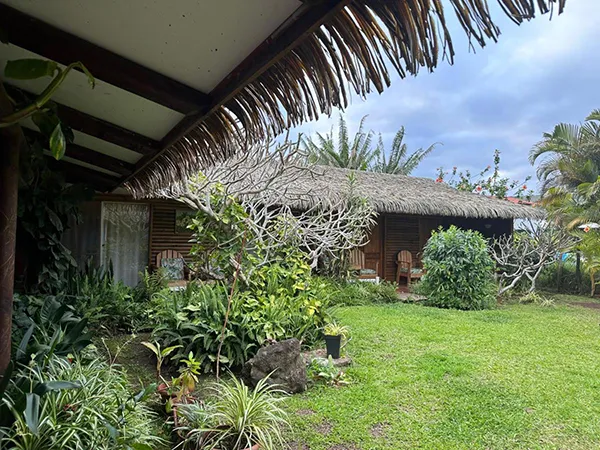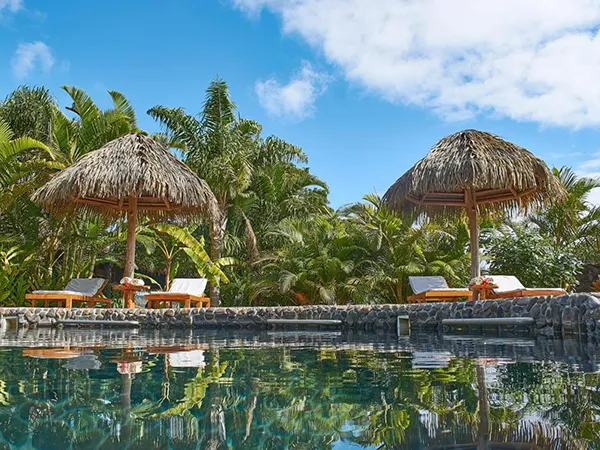If you’re planning your first trip to Easter Island, here’s the first thing you should know: Rapa Nui is its real name.
Easter Island? That’s just the nickname slapped on it by some European explorers who happened to show up on the island on Easter Sunday in 1722.
This tiny volcanic island in the Pacific isn’t just remote, it’s next-level remote. How did people end up here? Where did they come from? And what’s the deal with those giant moai statues?
Rapa Nui offers a glimpse into an ancient civilization that mastered art, astronomy, and engineering, all while thriving in one of the most isolated inhabited places on Earth.
But with so much to uncover (nearly 900 moai statues, a unique language, and cultural traditions like the Bird-Man ceremony), it’s easy to feel overwhelmed about where to even begin.
That’s why we’ve crafted this guide specifically for first-time visitors. From the must-see sights to the fascinating stories behind the island’s history, you’ll find everything you need to make the most of your adventure!
Know Before You Go
Let’s kick things off with a map of the island and some key details (and costs!) to keep in mind before you book that flight:
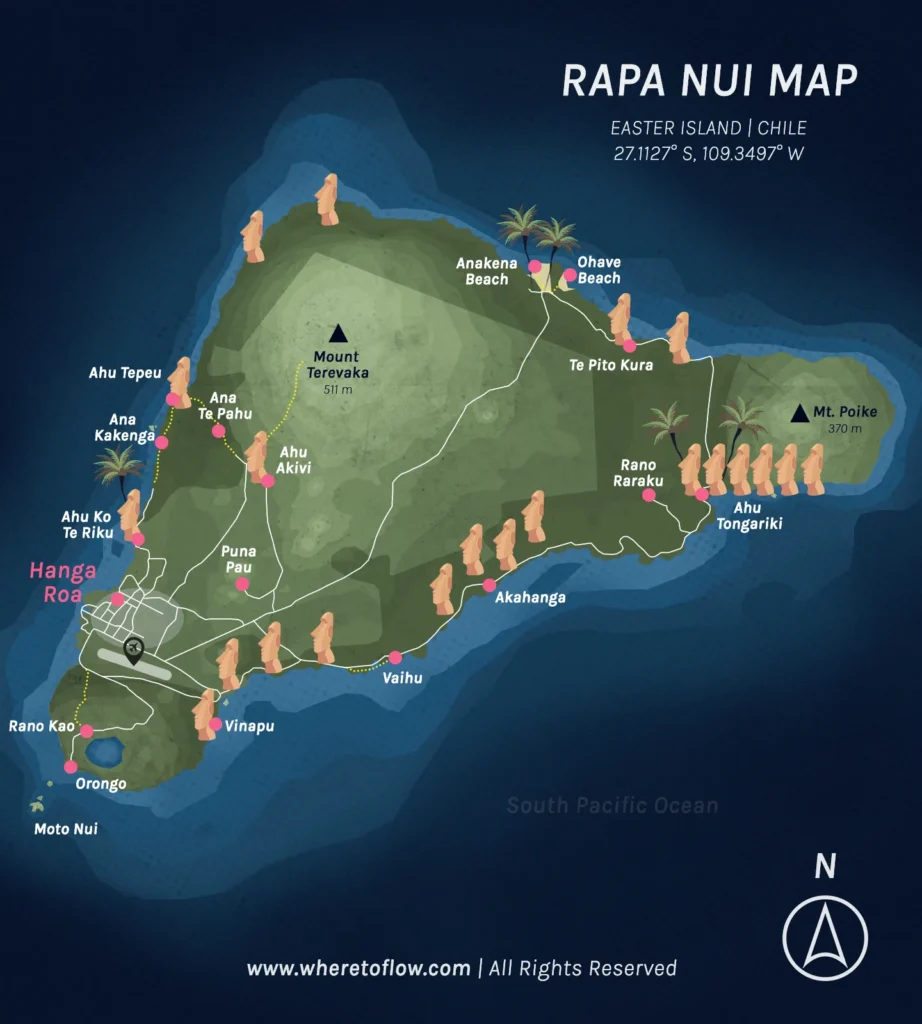
The town of Hanga Roa, near the airport, is the island’s hub. This is where you’ll find most hotels, restaurants, and amenities. It’s essentially the heart of island life.
Now, here’s something important: the darker green areas on the map are part of Rapa Nui National Park, and most of these can only be visited with a certified guide. That means seeing most of the famous moai statues requires both a National Park ticket and either a guided tour or a private guide.
Fun fact: moai statues were created to honor and commemorate ancestors and were considered symbols of social status. The bigger the moai, the more prestige it brought to the family or lineage that commissioned it. In other words, these statues were the ultimate flex back in the day.

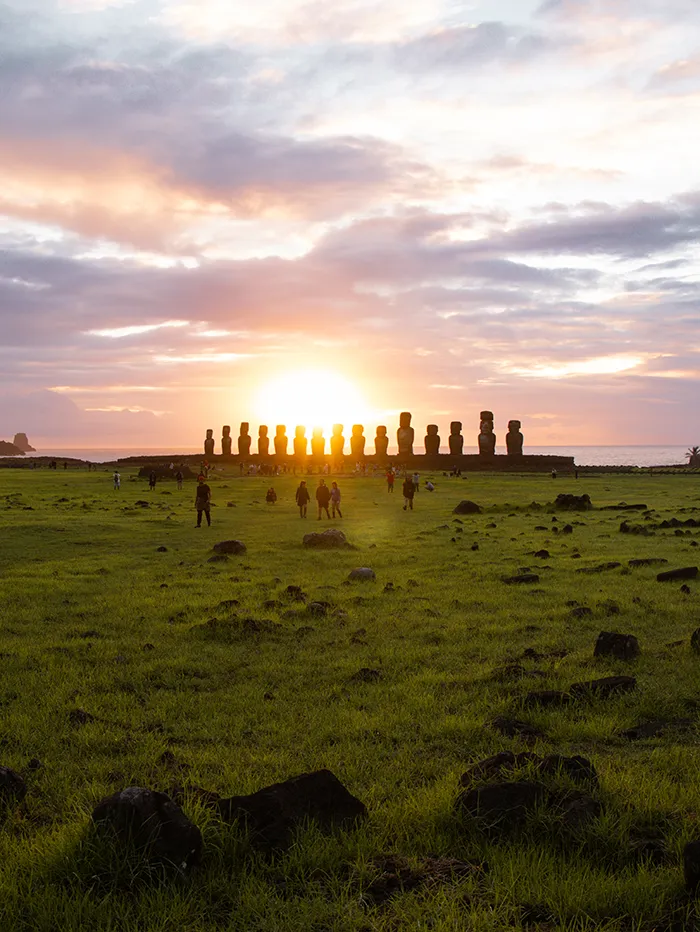
Costs to Keep in Mind
🗿 National Park Ticket: it costs $80 USD and is valid for 10 consecutive days from the start date. Tickets can be purchased online on the official website.
🎟️ Guided Tour: the most budget-friendly and convenient way to explore the National Park. Half-day tours typically cost around €40, while full-day tours go for about €80 (booked in town). If booked online in advance, you’ll find full-day tours starting at €65.
🤑 Private Guide: if you’re after a personalized experience, this is your go-to option, but it comes at a higher price. Rates range from €150 (guide-only, you’ll need to rent a car separately) to €250 (guide + car) for a full day. You can find a list of private guides here, but we recommend contacting them at least 2-3 weeks in advance as they can take a while to reply.
🚗 Car Rental: rates vary by season, but you can typically rent a Jimny for about €60-70 per day. Don’t forget to budget around €15 for gas, which should be enough to cover a day of riding across the island.
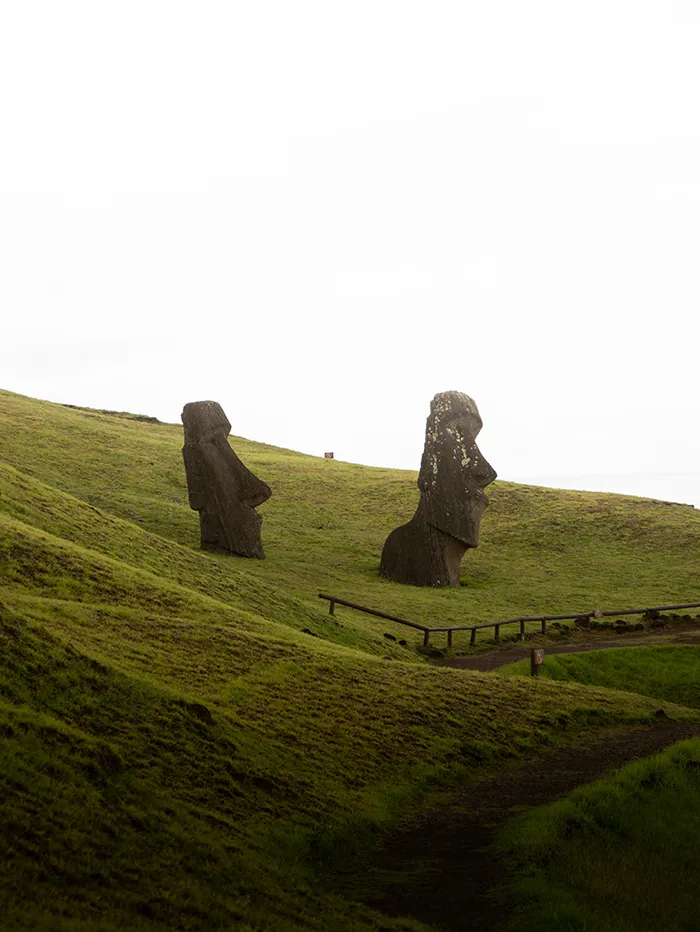
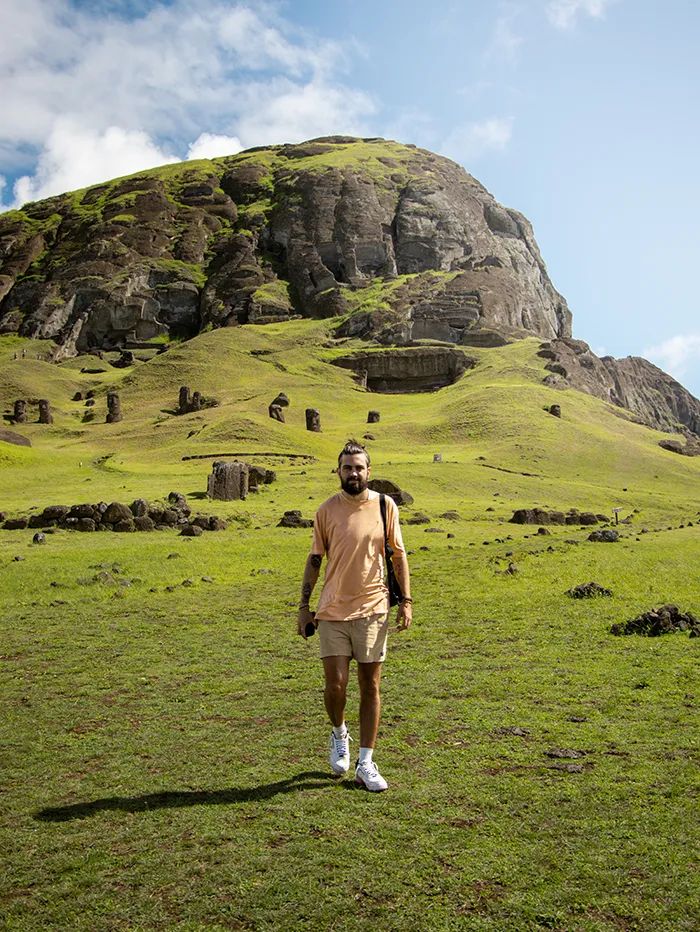
Important: you’ve probably read in other blogs that you need to bring loads of cash to Rapa Nui because cards aren’t widely accepted, but that’s no longer the case.
While we did end up paying for all our tours and car rentals in cash (mainly because we brought so much with us), we found that nearly every restaurant, shop, and establishment we visited accepted card payments without a problem.
That said, it’s always a good idea to have some cash on hand for smaller vendors or just in case, but don’t stress about weighing yourself down with stacks of pesos, your card will likely work just fine.
Best Time to Visit
Rapa Nui has a high and a low season, and the best time to visit really depends on what kind of experience you’re after:
☀️ High season (October to April): this is the island’s summer, with warm temperatures averaging 25°C and plenty of sunshine to go around. However, it’s also the busier season and you can expect slightly higher prices.
⛅ Low season (May to September): for a quieter experience, low season offers cooler weather, averaging around 18°C and fewer tourists. Rain showers are more common during this time of the year, and the seas can get a bit rougher, but the peaceful vibe makes it just as magical (plus, it’s easier on the wallet).
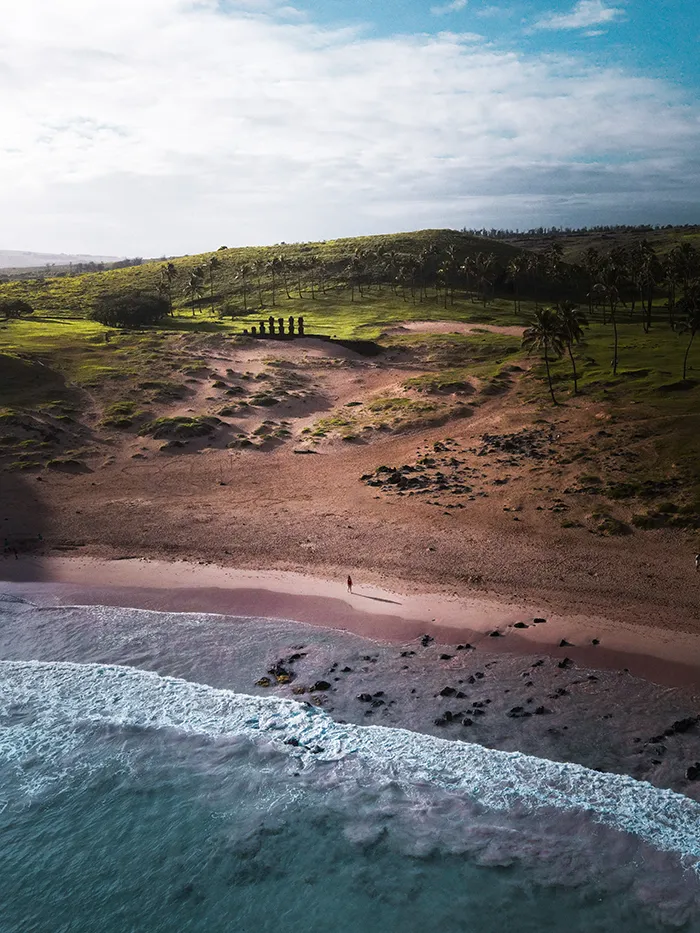
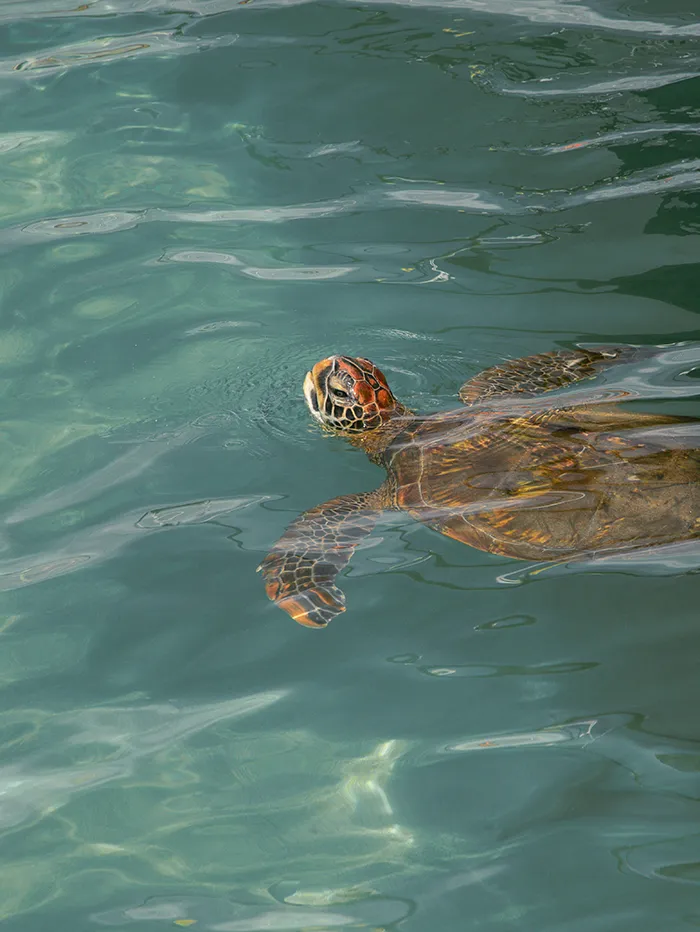
Hot tip: February brings the Tapati Rapa Nui Festival, a two-week celebration of Rapa Nui culture with music, dance, and traditional competitions. It’s a beautiful experience, but you should book early as it’s the island’s most popular time!
How Long to Stay on Rapa Nui
To make the most of your trip to Rapa Nui, we’d recommend staying for a minimum of 5 days. This gives you plenty of time to make all the most important tours and even have some beach time without feeling rushed.
Also read: Easter Island: the ULTIMATE 5-Day Itinerary
How to Get to Rapa Nui
Rapa Nui is one of the most isolated inhabited places on Earth! It sits over 3,700 km off the coast of Chile and 4,200 km from Tahiti, with nothing but the vast Pacific Ocean in between. Flights are primarily available from:
🇨🇱 Santiago, Chile: operated by LATAM Airlines, this is a 5-hour journey and round-trip fares typically range from 300 to 700 EUR, depending on the season and how far in advance you book.
🇵🇫 Papeete, Tahiti: this is a 6-hour journey and flights are less frequent and may not operate daily like from Chile. Round-trip fares are also higher, often ranging from 1,500 to 2,500 EUR, due to limited availability.
Book your flights to Rapa Nui here >
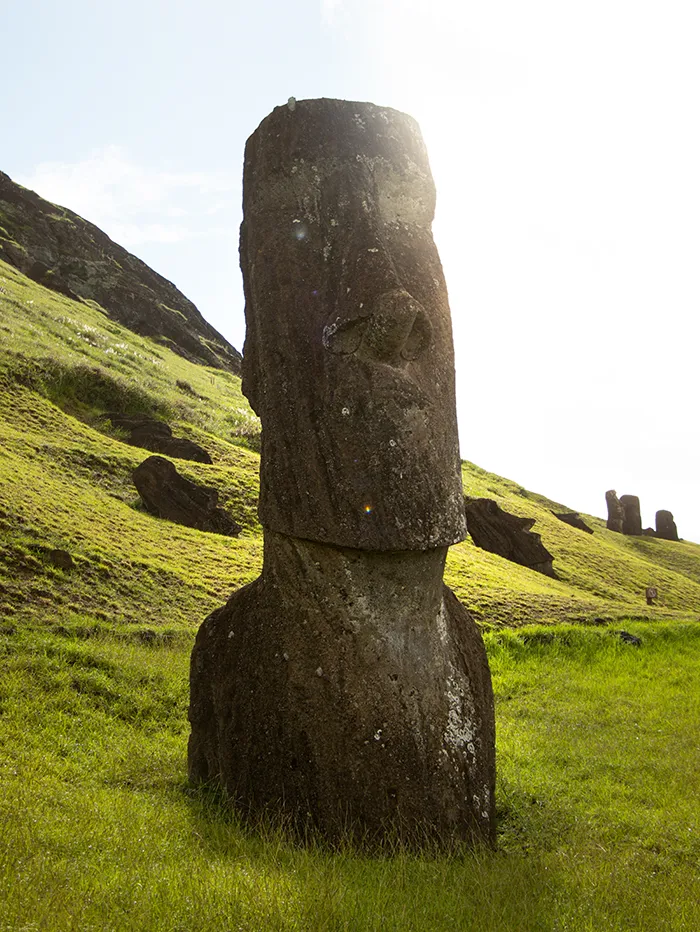
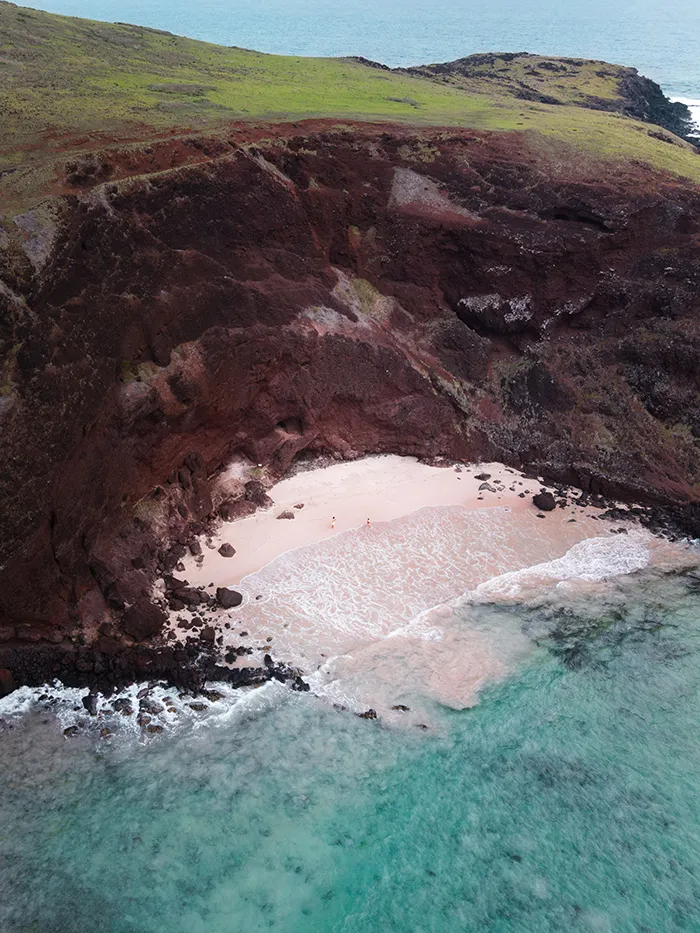
Hot tip: we use Google Flights to search for the best flight deals! Search for flights and hit the “track prices” button to receive email updates with the best fares. We use this technique daily and that’s how we snagged round-trip tickets to Rapa Nui from Santiago for just 150 EUR each (end of February, post-Tapati Festival).
Getting Around Rapa Nui
🎟️ Guided Tours: Guided tours will be your go-to option for exploring Rapa Nui since visiting the moai sites without a certified guide is not allowed. Unless you hire a private guide, save the car rentals for a chill day exploring the beaches up north or for when you want to roam freely outside of moai sites.
🚗 By car: if you’re not planning on visiting any moais OR if you hire a private guide, this is the most convenient way to explore the island. You can grab one right in Hanga Roa, the island’s main town, especially along the central Atamu Tekena Road.
🚲 Bike or Quad: you could also rent a bike or a quad for the day. Just keep in mind that the ride from Hanga Roa to the northern beaches is a 30-minute trip by car, so plan your stamina (or fuel) accordingly. It’s a fun way to see the island if you’re up for the challenge!

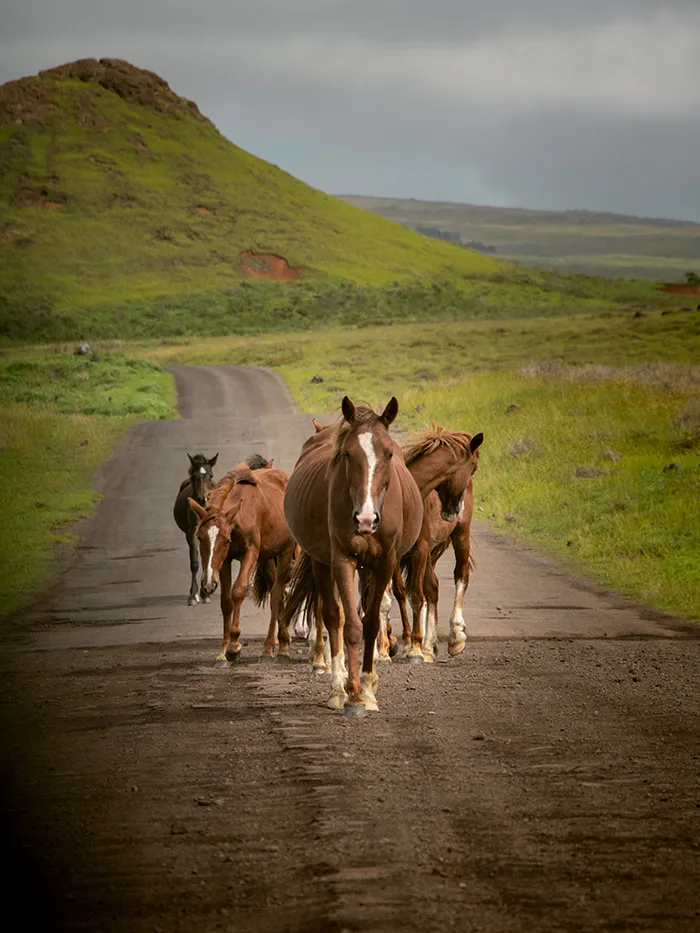
Where to Stay at Rapa Nui
As mentioned before, Hanga Roa is where everything is, so of course you’ll have to find a hotel around here. Here are some of our top recommendations:
Accommodations on the island can fill up quickly, especially during peak seasons, so it’s wise to book well in advance to secure your stay.
Book your accommodation at Rapa Nui here >
Fun fact: the first inhabitants, likely Polynesians, are believed to have arrived on the island ~1200 CE. They established a thriving society, developed the Moai statues, and cultivated the island’s natural resources.
Around the 1600s, deforestation and overuse of resources led to ecological challenges. Social structures shifted, civil war took place, and the focus moved from Moai construction to survival. Soon after, Europeans arrived.
Where to Eat on Rapa Nui
🐟 Aloha Food Trucks: this open-air food truck spot is super budget-friendly and you can find all kinds of food here. But the real star is the famous Polynesian tuna ceviche which is absolutely delicious! We love it so much that we end up here almost every night for dinner.
🥟 O Te Ahi: another place we visited almost every day, this bakery has the BEST empanadas de horno ever! If you’re not vegetarian, ask for the mechada one and you won’t regret it. They’re also super cheap.
🍽️ Aringa Ora: we have one simple travel rule: if local people eat here, we’ll have good food. That was the case with this small restaurant and it did not disappoint. Lots of options, huge portions, and great service!
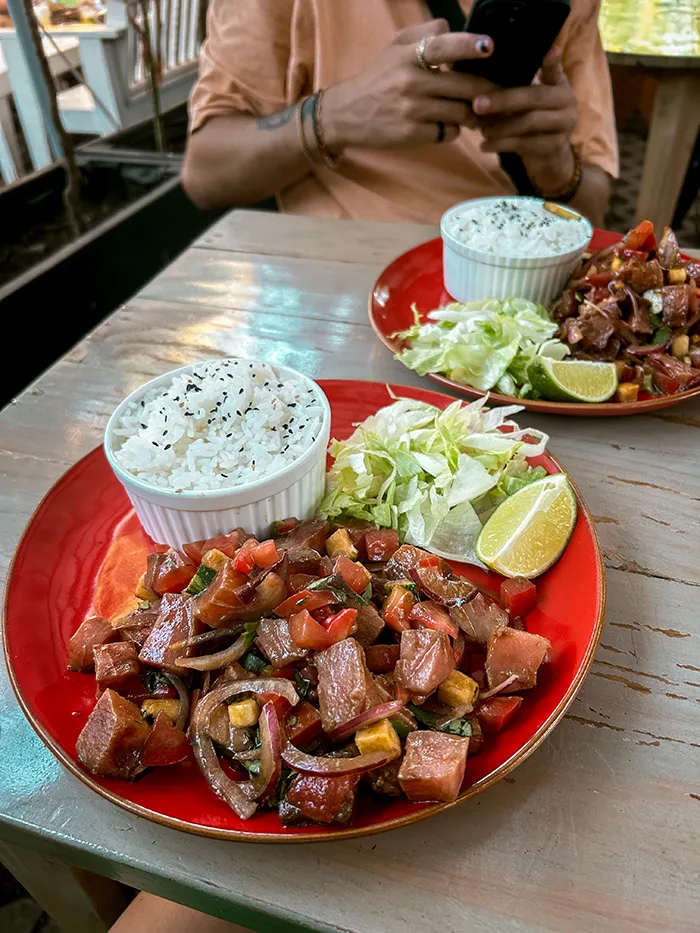
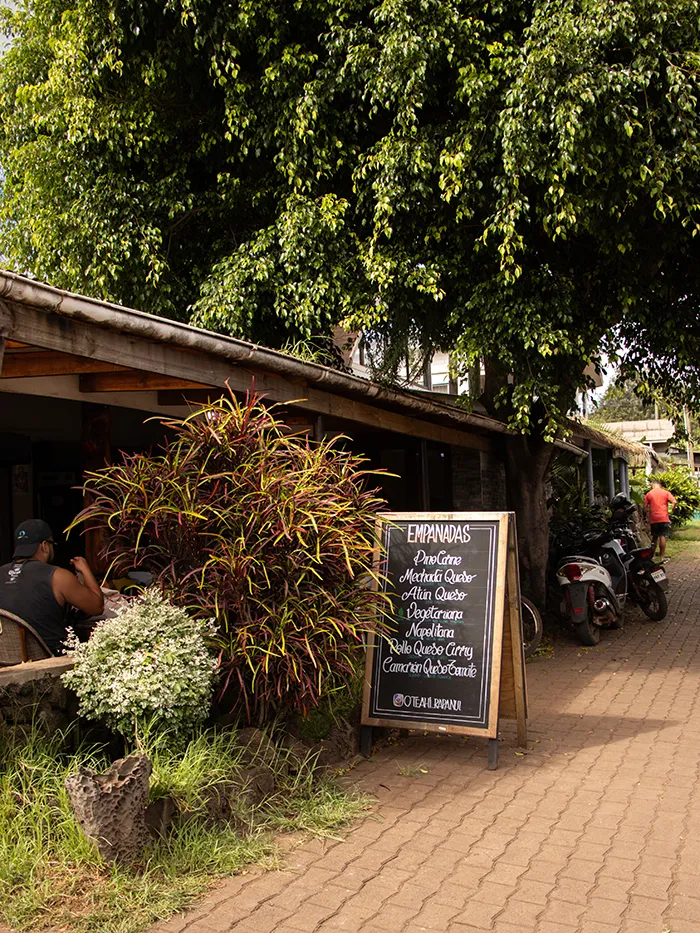
Note: We stuck to the main street for eating, but you can also find good options near the Hanga Roa harbor on the seafront. Those are more expensive but the best for a good end-of-the-day beer!
Things to Do on Rapa Nui
There’s so much to do on Rapa Nui! Here are some of the highlights, but if you want more detailed information on costs and other amazing activities, check out our guide on the top 10 must-do activities.
🗿 Visit the Moai (of course!): with over 900 statues across the island, visiting these iconic figures is an absolute must. Sites like Rano Raraku, the volcanic crater where the Moai were carved, and Ahu Tongariki, home to 15 restored Moai, are unmissable.
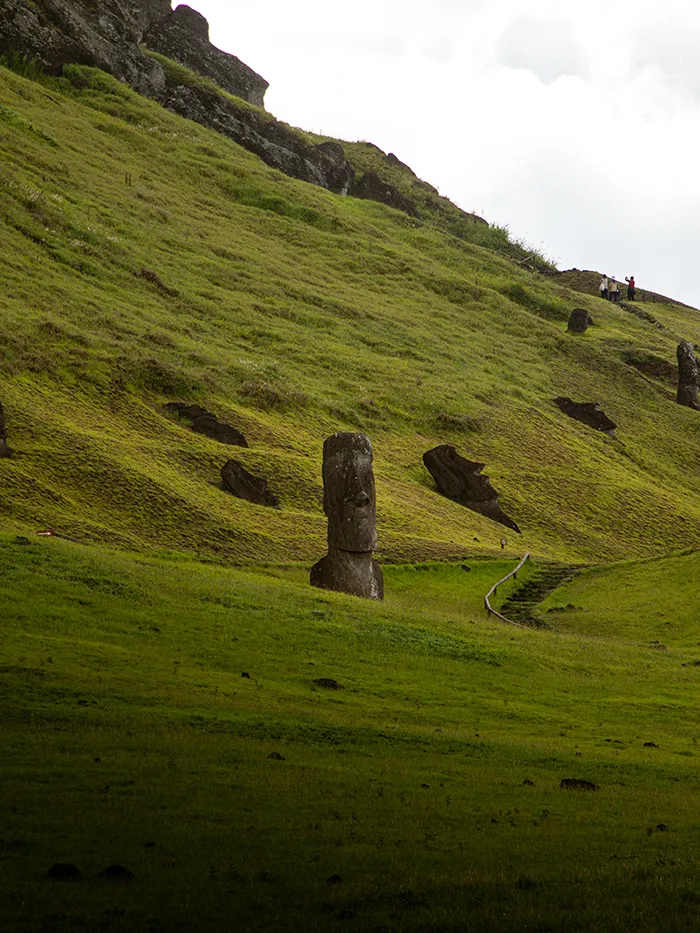

Read the complete guide here: What to Do on Easter Island: Top 10 Must-Do Activities
🐴 Horseback Riding to Terevaka: ride to the highest point on the island for breathtaking 360° views.
🌋 Learn About the Birdman Cult: visit this ceremonial village at Rano Kao Volcano to learn about the fascinating rituals of the Birdman Cult. The stories of the annual challenge to rule the island are surreal!

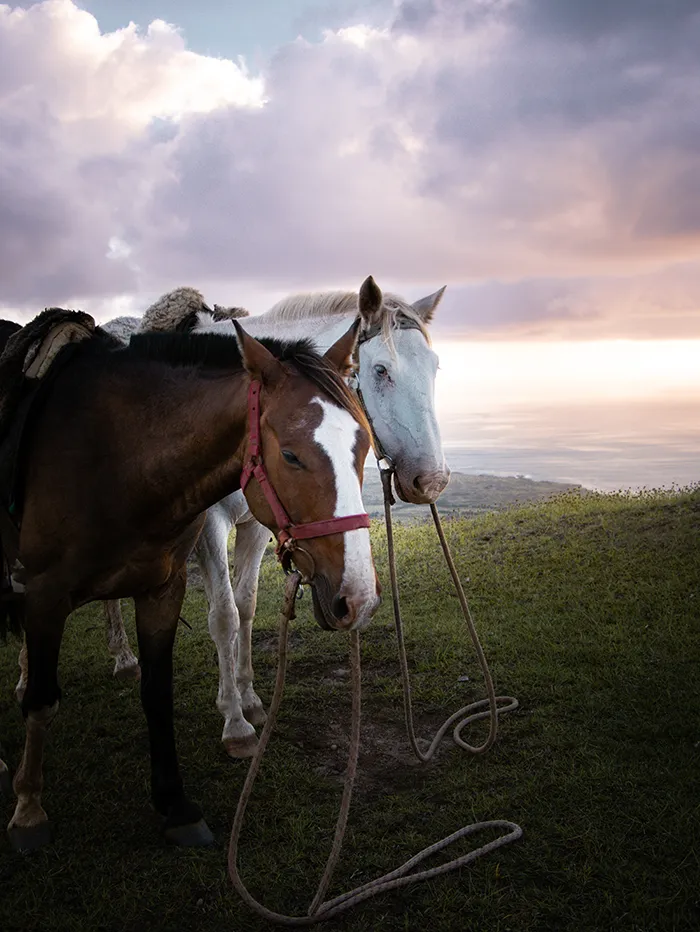
🌊 Scuba Dive to the underwater Moai: while a bit touristy, diving to an underwater Moai in crystal-clear water filled with healthy coral makes this a one-of-a-kind experience.
🪨 Explore Caves: walk into an expansive network of lava tubes to learn more about a time of civil unrest on the island.
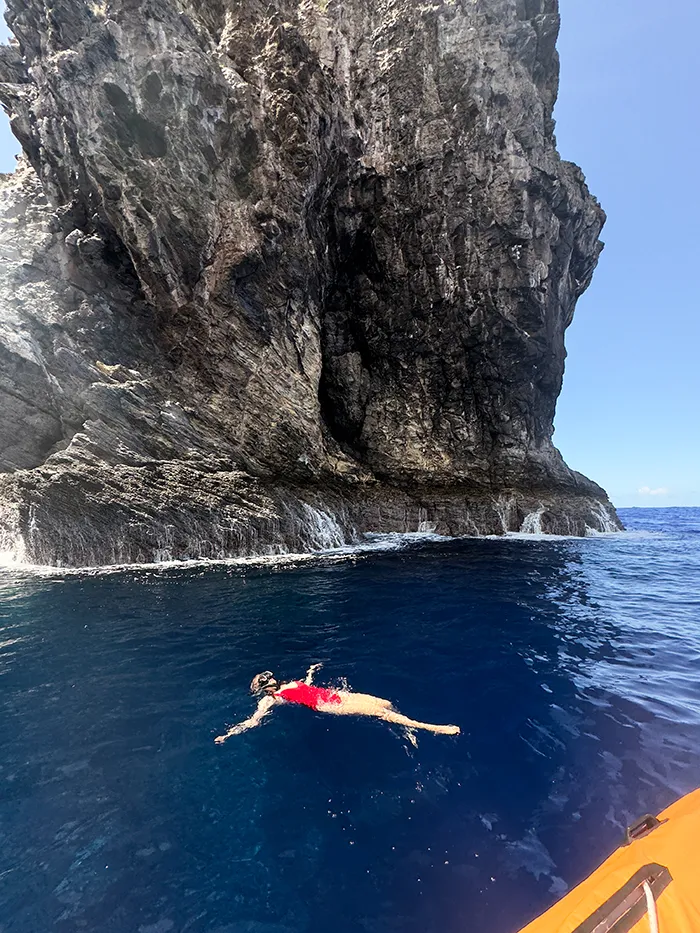
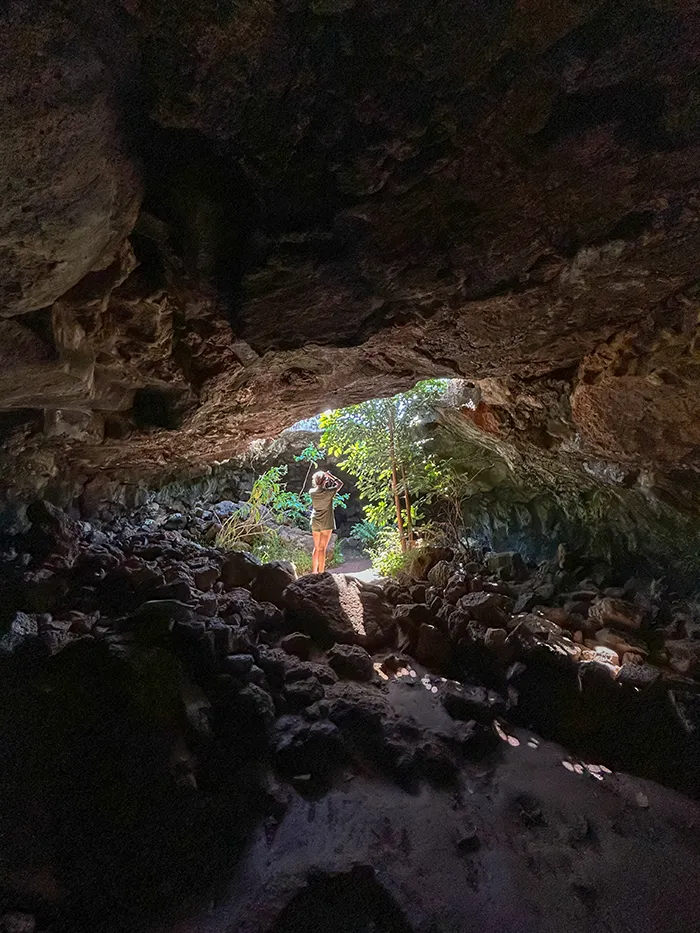
Rapa Nui on a Budget
🏠 Accommodation: hostel dorms start at around €20-30 per night, while budget private rooms start at €50 a night.
🍔 Food: local restaurants offer meals for around €10-20 per dish. Empanadas and other pastries cost about €2-3 each and are also a great snack option.
🚗 Transport: car rentals begin at roughly €60-70 per day and you can budget around €15 in gas for a full day out riding.
🎟️ Activities: if you’re on a budget, go for guided tours. We’d recommend following our 5-day itinerary where we break down the best must-do tours, and budgeting at least €350-400 for activities so you don’t end up missing out on anything you really want to do.
Note: we spent five days in Rapa Nui at the end of February 2024. We had a budget private room and we ate out at every meal. We did a total of 5 different guided tours, including snorkeling and horseriding. Our budget averaged around €100 per person per day.
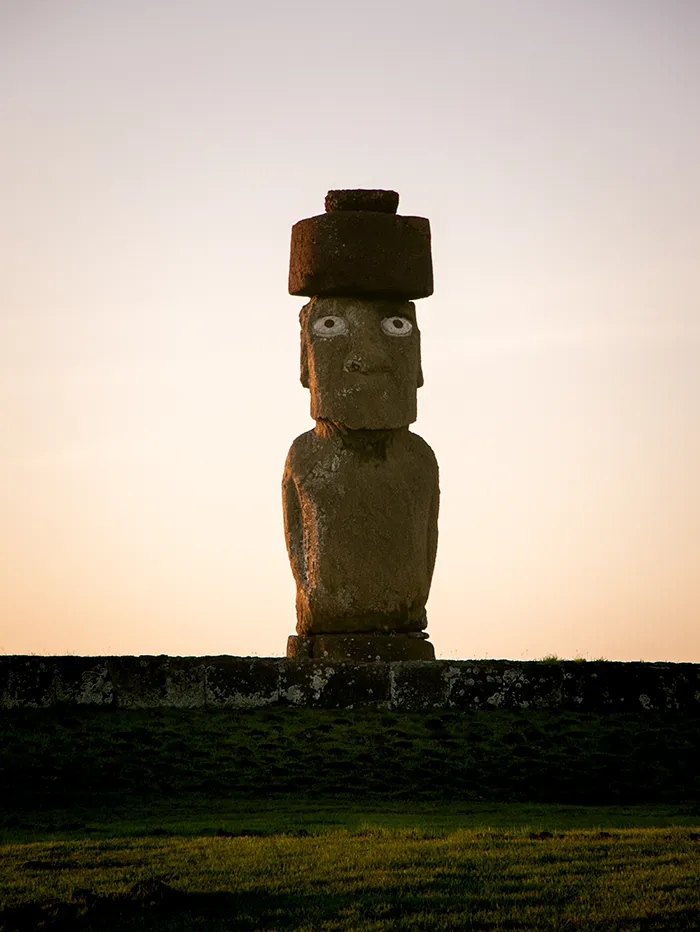
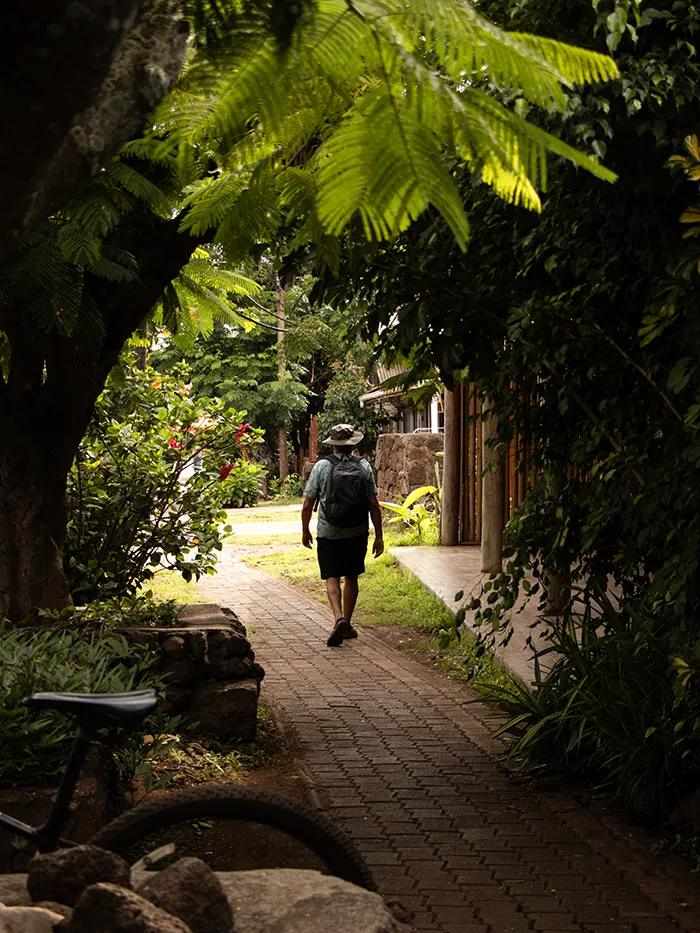
Tips for visiting Rapa Nui
- Never touch the Moai statues. Seriously! Tourists have been fined up to $20,000 for touching them, and one visitor even received a 3-year ban for chipping an ancient Moai’s earlobe as a souvenir. Just don’t do it.
- For emergencies, dial 131 to reach the island’s emergency line.
- The island has one main hospital, the Hanga Roa Hospital. For severe cases, you might need to be evacuated to Santiago. Keep in mind that this flight is usually not covered by insurance and can be extremely expensive, so be cautious to avoid accidents!
- Some parts of the island have zero cell or internet service, but you’ll be fine in Hanga Roa, where connectivity is reliable.
- The Rapa Nui language is still spoken today and has Polynesian roots. Iorana = hello and goodbye!


